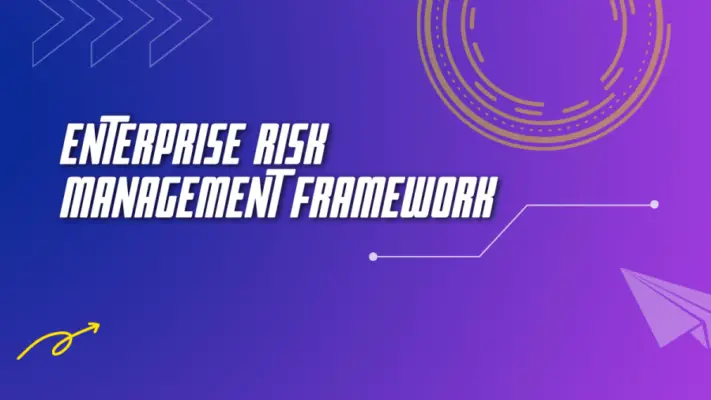Mastering risk management standards is essential for businesses aiming to safeguard themselves against uncertainties and threats. By implementing structured principles like ISO 31000 and the COSO ERM framework, organizations can identify potential risks and allocate resources effectively.
Risk assessment techniques help prioritize these threats, enabling managers to make informed decisions that enhance corporate governance. Continuous monitoring and reviewing of risk management practices guarantee alignment with strategic objectives, fostering resilience.

Adopting best practices popular risk management standards not only protects assets but also promotes a risk-aware culture. Those interested will discover further insights into achieving effective business protection through established risk management standards.
Key Takeaways
- Understand and adopt established standards like ISO 31000 to guide your risk management practices effectively.
- Conduct thorough risk identification and assessment to recognize potential threats to your business objectives.
- Develop and implement strategic risk treatment plans that mitigate identified risks and minimize potential losses.
- Continuously monitor and review risk management policies to ensure they align with current organizational goals and emerging risks.
- Foster a risk-aware culture through training and awareness programs, enhancing the organization’s resilience and responsiveness to risks.
What is Risk Management and Its Importance
Risk management is fundamentally about maneuvering through the complexities of potential threats to an organization’s objectives. It involves risk identification, assessment, and treatment, ensuring that businesses can navigate uncertainties effectively.
Effective risk management is essential for achieving goals, avoiding legal liabilities, achieving objectives, and securing long-term success. By implementing a robust risk management framework, organizations enhance their corporate governance practices, fostering a culture of informed decision-making.
Managers play a significant role in managing risk, as they allocate resources wisely and minimize potential losses. Adopting risk management principles allows companies to proactively address challenges and safeguard their operations, finances, and reputation.
Ultimately, a thorough approach to risk management strengthens an organization’s resilience in an ever-evolving business landscape.
Understanding Risk Management Principles
Grasping the core principles of a risk management framework is essential for any organization aiming to navigate uncertainties effectively.
These principles serve as a framework that enhances risk management practices, allowing organizations to prioritize risks and allocate resources wisely.
Key components include:
- Risk Identification – Recognizing potential risks that could affect the organization.
- Risk Assessment – Evaluating the likelihood and impact of identified risks.
- Risk Treatment – Implementing strategies to mitigate or manage risks.
Risk Assessment and Analysis
Conducting a thorough risk assessment and analysis is essential for organizations aiming to achieve their objectives in a volatile environment. This process involves identifying and evaluating potential risks that could impact the organization’s goals and strategy.
By employing effective risk assessment techniques, organizations can prioritize risks, effectively allocate their resources efficiently, and develop appropriate risk management plans.
Risk analysis complements this by evaluating the likelihood and impact of identified risks, ensuring informed decision-making processes. Together, these practices enable organizations to manage potential risk more proactively, allowing them to implement strategic measures to minimize potential losses.
Ultimately, risk assessment and analysis form the foundation for business managers in developing robust strategies that safeguard the organization’s interests in an ever-changing landscape.
Implementing Risk Management in Your Business
Successful implementation of risk management procedures in a business is essential for maneuvering uncertainties and achieving strategic objectives.
Businesses can adopt popular risk management standards like ISO 31000 to guide their efforts in mitigating risks. The process includes:
- Identifying and Evaluating Risks: Recognizing potential risks and appraising their impact.
- Developing Risk Treatment Strategies: Formulating plans based on the eight principles of effective risk management.
- Monitoring and Reviewing Activities: Continuously evaluating risk management activities to guarantee effectiveness.
Risk Management Standards and Frameworks
Organizations frequently rely on established risk management standards and frameworks to navigate uncertainties effectively. Business managers utilize recognized frameworks like ISO 31000 and the COSO ERM framework to develop robust processes for managing risk.
These risk management plan and standards guide organizations in achieving objectives while minimizing legal liabilities and effectively allocating resources. By implementing structured strategies, organizations can identify potential threats and assess their impact on operations.
The COSO ERM framework provides a thorough approach that enhances enterprise risk management, allowing businesses to systematically evaluate risks.
Ultimately, adopting these standards guarantees organizations are well-equipped to manage risks, safeguard their interests, and promote long-term success in an ever-changing environment.

Effective Risk Monitoring and Review
Effective risk monitoring and review serve as the backbone of a resilient risk management strategy. Organizations must continuously analyze their exposure to risks, including natural disasters, to guarantee effective risk management. By adhering to established guidelines and ISO standards, companies can enhance their own risk analysis and management procedures.
Key components include:
- Monitoring risk treatment strategies: Regularly evaluating the effectiveness of implemented strategies helps in identifying any gaps.
- Reviewing risk management policies: Keeping policies up to date guarantees alignment with current risks and objectives during projects.
- Updating the risk management plan: Adapting the plan based on evaluation outcomes enables organizations to address new risks promptly.
These practices enable companies to achieve their objectives, minimize losses, manage risk and secure long-term success.
Best Practices for Effective Risk Management
In the domain of risk management implementation, implementing best practices is vital for organizations seeking to navigate uncertainties and safeguard their assets.
These practices provide guidance to develop a thorough risk management plan aligned with the COSO framework, an international standard known for its five components. The planning process also involves identifying and evaluating risks, establishing effective management policies, and developing treatment strategies.
Continuous monitoring and review of these practices guarantee organizations remain vigilant and responsive. Additionally, training and raising awareness about risk management foster a risk-aware culture within the sector.
Getting Certified in Risk Management
Although many professionals recognize the importance of risk management, getting certified in this field can greatly enhance their expertise and career prospects. Certifications like the Certified Risk Manager (CRM) and the Certified Risk Professional (CRP) validate knowledge of risk management principles and practices.
These credentials not only help individuals advance their careers but also increase their earning potential.
Here are three key benefits of risk management certification:
- Demonstrated Expertise: Certification showcases a professional’s commitment to mastering risk management standards.
- Career Advancement: Certified individuals often find more job opportunities and promotions in their field.
- Structured Training: Certification programs provide a framework for ongoing training and awareness in risk management practices.
Frequently Asked Questions
How Can I Build a Risk Management Culture in My Organization?
To build a risk management culture, leaders should promote open communication, provide training, and encourage accountability. They must demonstrate commitment to risk awareness, integrating it into daily operations, ensuring everyone understands their role in managing and mitigating risks effectively.
What Software Tools Are Best for Risk Management Implementation?
To implement risk management effectively, organizations often choose tools like RiskWatch, LogicManager, or Resolver. These platforms streamline processes, enhance collaboration, and provide valuable insights, ensuring teams can proactively identify and mitigate potential risks.
How Often Should Risk Assessments Be Conducted?
She believes risk assessments should occur at least annually, but more frequently if significant changes arise in the business environment. Regular evaluations help identify potential threats and guarantee effective risk management practices are maintained.
What Role Does Leadership Play in Risk Management?
Leadership greatly influences risk management by setting the tone, allocating resources, and fostering a culture of accountability. They champion proactive strategies, ensuring that team members understand risks and are equipped to address them effectively.
How Do I Communicate Risks to My Stakeholders Effectively?
To communicate risks effectively, they should present clear, concise information, using visual aids and straightforward language. Engaging stakeholders in discussions fosters understanding, encourages questions, and builds trust, ensuring everyone’s on the same page regarding potential risks.

Conclusion
In summary, mastering risk management standards is essential for any business aiming to protect its assets and guarantee longevity. By understanding core principles, conducting thorough assessments, and implementing established frameworks, organizations can effectively manage potential threats. Regular monitoring and adherence to best practices further enhance resilience. Additionally, pursuing certification can validate expertise in this critical field. Ultimately, a proactive approach to risk management not only safeguards a business but also fosters growth and stability in

Chris Ekai is a Risk Management expert with over 10 years of experience in the field. He has a Master’s(MSc) degree in Risk Management from University of Portsmouth and is a CPA and Finance professional. He currently works as a Content Manager at Risk Publishing, writing about Enterprise Risk Management, Business Continuity Management and Project Management.

